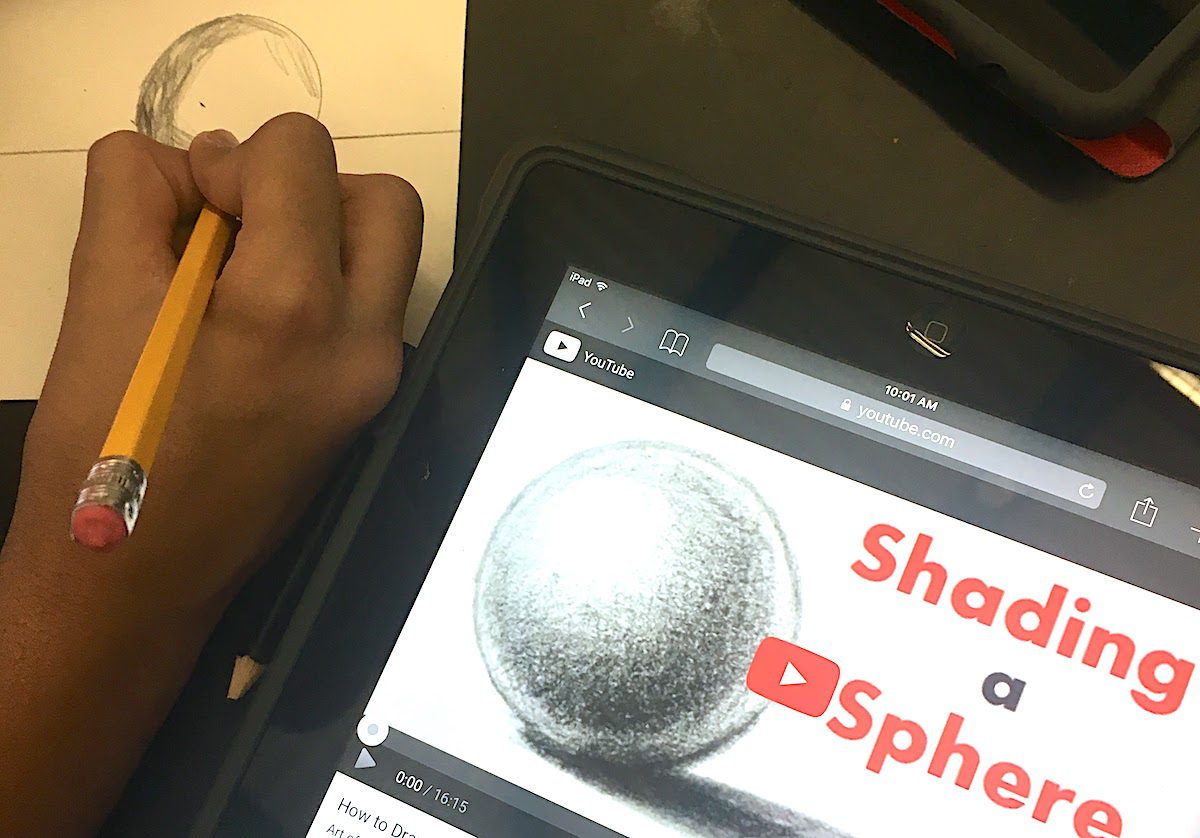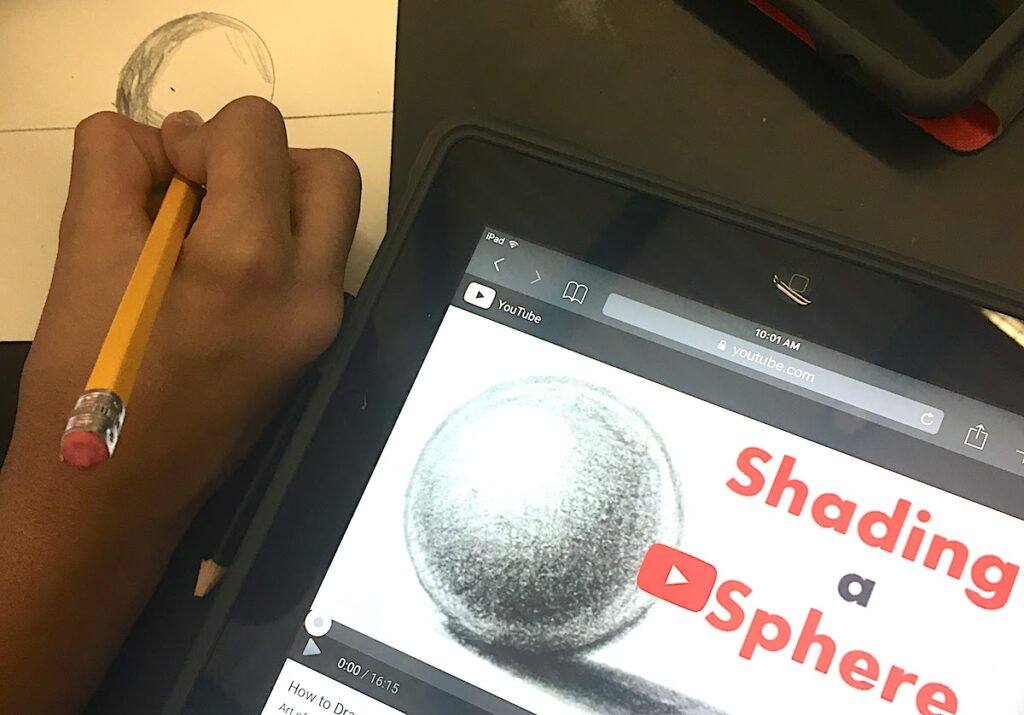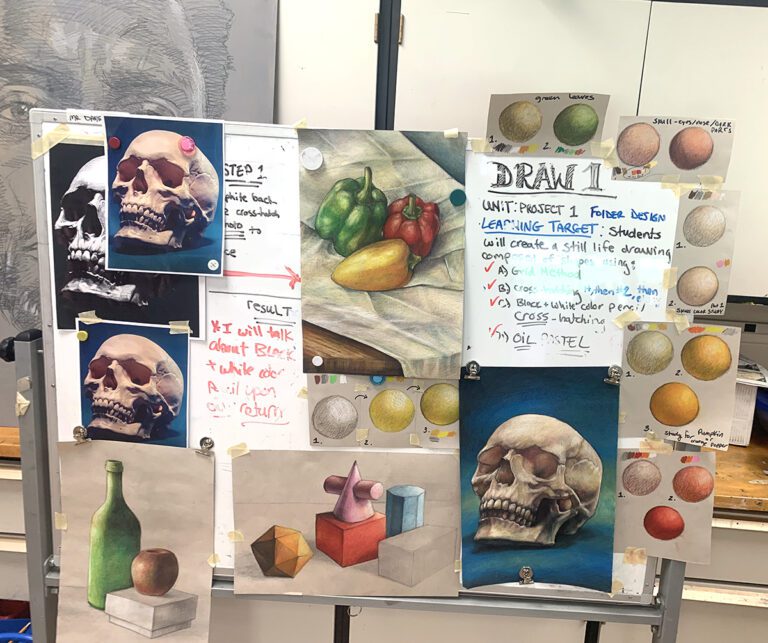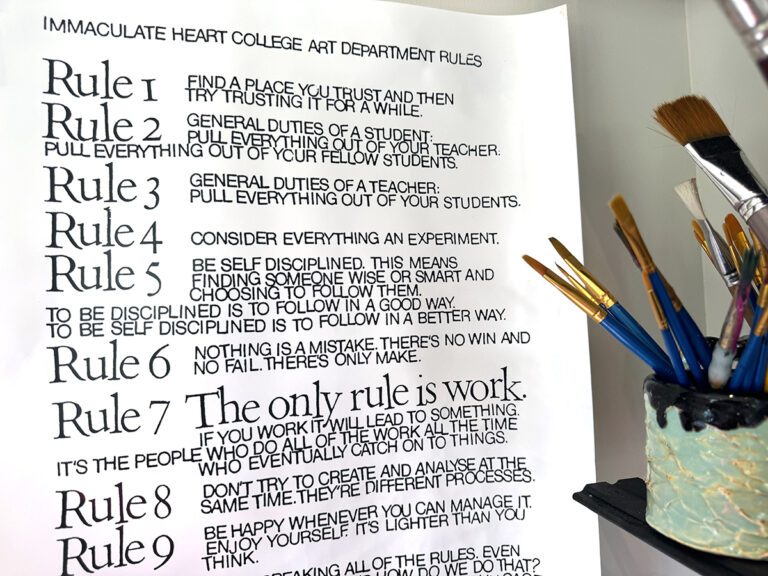Have you ever had that moment right after you finish a demo or discussion where the door creaks open and in walks a student who is fifteen minutes late? Or, better yet, when you’ve finished giving directions for the day and a student reminds you they’ve been absent and have no idea what you’re talking about?
These are typical situations many art teachers encounter. Repeating yourself and constantly re-teaching material can become frustrating and tiring. However, there is a solution!
Flipped learning is an innovative way to put a stop to these inconveniences.

If you’re unfamiliar, the flipped classroom model is a way to create a student-centered atmosphere that promotes engagement and learning using pre-recorded instructional videos and other methods.
You can learn about the basics of flipping here:
- The Most Important Info You Need to Know About Flipping Your Art Room
- Easy Steps to Get Started with a Flipped Classroom
What’s more, flipping works for all teaching models. Create videos to share steps in a lesson, videos to introduce a theme or big idea, or even videos to share artistic techniques or classroom rules and procedures.
Here are two ways you can use your flipped learning to support absent students.
1. Share important information with a student before they’re absent.
If you know a student is going to be absent ahead of time, you can share a link to the information they’ll miss before they go. Include a brief description of what they’ll be learning so they know what to expect. This way, the student may be able to watch the video or read the notes from home. When they return, they’ll be ready to apply the information in class.
If your student has a smart device, you can text or email the link right to them. But writing it down on a sticky note or in their school planner also works!
2. Help the student catch up at school.
While option one is nice, it’s rare you’ll know about a student’s absence ahead of time. Or, even if you do, they may not have access to the necessary technology to access the content at home. With flipped learning, however, catching up once they’re back at school is easy.
Once the student is back at school, set them up with a computer, iPad, or other device and a set of headphones so they can watch the required information. It’s nice to have a designated area in your room for this purpose. However, if you’re short on space or tech, the library can be a great space for this as well.
Here are three benefits of using flipped learning with absent students.
- Students catch up on their work faster.
With flipped learning, students no longer have to wait for you to finish with other students before explaining what they missed. They can simply get right to watching the video and then get right to work. Or, if they watched the video at home, they can maximize their class time and catch up with the group. - You don’t have to re-teach information.
When you have hundreds of students, re-teaching can be time-consuming. Flipping your classroom is like having an extra teacher in the classroom, freeing you up to move the rest of the students ahead. - It promotes student-centered, self-directed learning.
Flipping puts part of the responsibility on the student. Keeping the videos short (10 minutes or less) keeps student engagement high. Rather than coming in feeling disappointed that they missed something, they can come in feeling proud they already watched the video. Or, they can come in feeling excited to use the special iPad station to find out what they missed!
Remember, although creating videos is what usually comes to mind when flipping, there are other methods to consider as well. Digital notes with supplemental photos can be just as effective. Google Classrooms and SMORE are two great platforms to try.
In the same vein, don’t feel like you have to flip your entire classroom to reap the benefits. You could choose to flip certain courses you teach, certain lessons or projects, or certain demonstrations. It’s all about finding a style and method that works for you and your students.
Regardless of what you choose, flipped learning can become an invaluable resource in your classroom. Not only does it promote student-centered learning, but it is also a huge time saver on your part when it comes to absent students. More importantly, it allows your students to receive the same high-quality instruction and information no matter what!
How have you used flipped learning in the classroom?
What systems do you have in place to help support students who are absent?
Magazine articles and podcasts are opinions of professional education contributors and do not necessarily represent the position of the Art of Education University (AOEU) or its academic offerings. Contributors use terms in the way they are most often talked about in the scope of their educational experiences.






